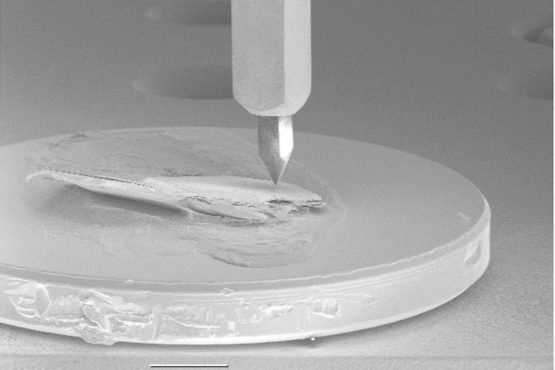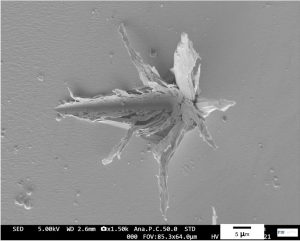Nanoscale Tribology of 2D Layered Materials

The tribological response of 2D transition metal dichalcogenides (TMDs), critical for the structural integrity of devices made from these materials is largely unknown. Researchers at PFL are studying the nanomechanical, damping, and tribological behavior of these layered, single crystal materials by an integrated in-situ testing and visualization technique. Scratch, indentation, and vibrations of these materials at the nanometric length scale are being investigated inside electron microscopes. The real time videos reveal the mechanisms of delamination and energy of bonding at the interfaces of layers. This study holds the potential to advance the scientific understanding of tribological responses in 2D materials for semiconductor device applications. This research is a multidisciplinary team of experts from Florida International University, Penn State University, University of North Texas, and University of Central Florida and is supported by the National Science Foundation
Beyond the engineering opportunities, there are also exciting fundamental questions. They relate to the nature of the complex dislocation, amorphization, and mechanical alloying mechanisms upon straining and their relationship to the enormous strength. Studying these mechanisms is enabled by mature atomic-scale characterization and simulation methods. A better understanding of the extreme strength in these materials also provides insight into modern alloy design based on complex solid solution phenomena


